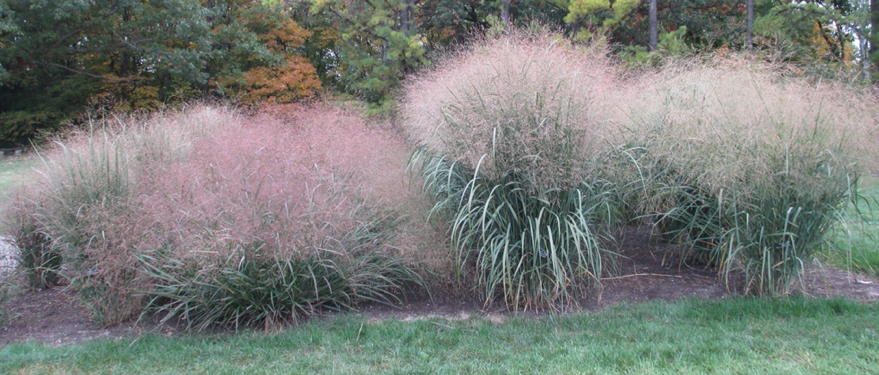Chapter 3. Common Native Grasses of the Northern Midwest
3.12 Switchgrass

Panicum virgatum
Warm season; Perennial
Characteristics: 3–6’; upright, foliage greenish purple; flowers bronze to beige; upright open; self-seeder
Growing Conditions: average to wet soils; full sun; hardy zones 3–8
Native to the tallgrass prairie, switchgrass is competitive and can be aggressive. It is attractive through every season, even providing winter interest. Some nativars are prone to lodging, others self-sow large amounts of seed. Form and foliage color vary widely between nativars.
Nativars:
- ‘Cloud 9’: upright arching to 6’ or more, equally as wide; plant in the middle of a border with support for the huge 36” flowers.
- ‘Heavy Metal’: upright, dense, thick foliage, 4–5’
- ‘Northwind’: very stiff and upright, wide olive green foliage with flowers borne partially in foliage, good for creating a vegetation screen when planted close together, 5’.
- ‘Prairie Fire’: red and purple tipped foliage, 3.5–4’.
- “Rehbraun’: red tipped foliage and red seeds, red-brown switchgrass, 3–4’.
- ‘Shenandoah’: red and green foliage, 3–4’.
- ‘Thundercloud’: very tall, upright, thick and massive, 6–7’.
Associated Lepidoptera:
Species that use switchgrass according to the literature are the noctuid moth Dichagyris acclivis, the tortricid moth Aethes spartinana, Delaware skipper (Anatrytone logan), the blastobasid moth Blastobasis repartella, pink-streak moth (Faronta rubripennis), Leonard’s skipper (Hesperia leonardus), silvered haimbachia moth (Haimbachia albescens), Texas mocis moth (Mocis texana), stalk borer (Papaipema nebris), and tawny-edged skipper (Polites themistocles).

A displacement of a stem from its upright position.
A cultivar of a native plant.
The order that includes butterflies and moths.

